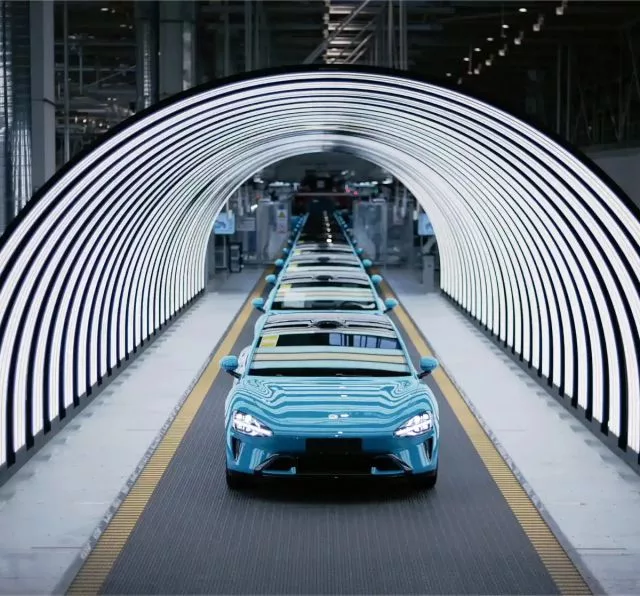
The use of the terms ‘autonomous driving’ or ‘full self-driving’ was banned in China on Wednesday due to new requirements issued by the Ministry of Industry and Information Technology (MIIT), according to China’s Financial and Economic News Agency.
The Ministry held a closed-door meeting with around 60 representatives from the auto industry, which focused “on the product access and software OTA filing requirements”.
The requirements were already part of a notice that was “jointly issued by the MIIT and the State Administration for Market Regulation” earlier in March.
The entity pushed the brakes on public testing of driver assistance software and demanded that all updates are filed, according to a screenshot of the minutes of the meeting circulating on Chinese social media.
The Ministry said in an official statement that automakers must “thoroughly conduct tests and validations for combined driver-assistance systems,” performing over-the-air (OTA) updates only after completing them.
According to the government agency, restrictions have been placed on OTA updates — companies are no longer allowed to use remote software updates to test or enhance their Advanced Driver Assistance Systems (ADAS) on vehicles that have already been delivered to customers, unless they have received prior approval.
Companies are required to “strictly fulfill the obligation to inform users, and earnestly assume the primary responsibility for production consistency” and “clearly define the functional boundaries and safety response measures of such systems.”
“Efforts must be made to truly enhance the safety level of intelligent connected vehicle products,” the entity added.
The MIIT stated that companies should refrain from using words like ‘smart driving’, ‘autonomous driving’, or ‘self-driving’, instead opting for ‘combined assisted driving’, as to “avoid exaggeration or false advertising.”
As of now, intelligent driving systems are at Level 2 (L2), which requires the drivers to remain attentive and ready to take over at any time, which is far from the idea of fully autonomous driving.
Industry Reaction
Analysts warn that stricter rules may raise costs and slow innovation, but could also prompt much-needed consolidation in China’s overcrowded auto market.
Fu Bingfeng, deputy secretary-general of the China Association of Automobile Manufacturers, emphasized on Thursday the importance of user education alongside tech adoption, in processes including delivery, use and maintenance.
Fu called for differentiated guidance programs for groups like first-time buyers and elderly drivers.
The heightened scrutiny comes after a fatal crash in late March involving a Xiaomi’s Su7 unit. The company revealed that the driver used the assisted driving feature, but about two seconds before the impending collision the system quit and asked the driver to take over the vehicle.
During the halt, the carmaker also modified its FSD label in China to ‘intelligent assisted driving’ (“智能辅助驾驶”), removing the ‘full self-driving’ from its title.
The U.S. brand confirmed on March 28 that both Hardware 3.0 (HW3) and Hardware 4.0 (HW4) vehicles will receive its assisted driving software in China.
As it prepares to launch its fully autonomous Cybercab with paid rides in Austin, Texas, in June, the EV maker recently revealed that its vehicles are now driving autonomously from the factory to their loading dock lanes.
According to Elon Musk, Tesla’s vehicles will start driving themselves to the customer’s house later “this year.”
Year to date, Tesla sold 143,000 units in China, having registered 5,300 vehicles this week.







